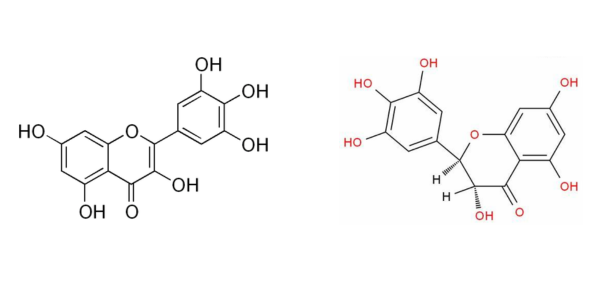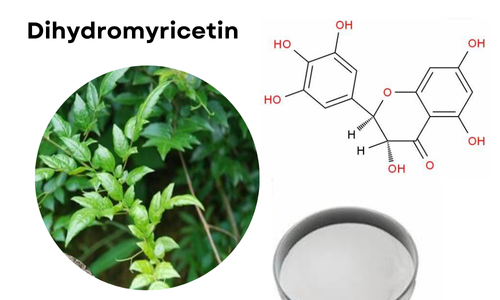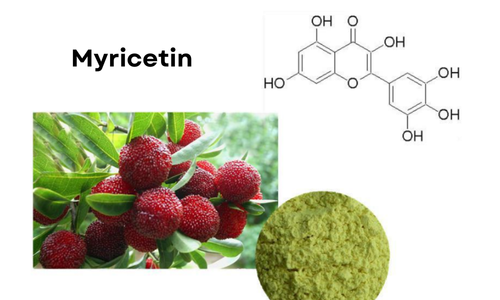
When exploring natural compounds for health benefits, dihydromyricetin (DHM) and myricetin often come into the spotlight. Although they share similar roots and benefits, these two compounds are distinct in several ways.
Are Dihydromyricetin and Myricetin the Same
No
Dihydromyricetin and myricetin are not the same. While they both belong to the flavonoid family and have some overlapping health benefits, they differ significantly in their chemical structure, source, and specific applications.
Differences Between Dihydromyricetin and Myricetin
Source: They are found in different plants
- DHM: This compound is primarily found in the Japanese raisin tree (Hovenia dulcis) and the vine Ampelopsis grossedentata, commonly known as snake wine vine.
- Myricetin: This flavonoid is more widely distributed in nature. It is found in various fruits, vegetables, and plants, including berries (such as myrica and bayberry), grapes, tea, and even some herbs.
Chemical Structure: They belong to different chemical classes
- Chemically, DHM is a flavanonol, a subclass of flavonoids, with the chemical formula C15H12O8. Its structure includes a dihydroflavonol backbone, which is key to its unique properties.
- Myricetin is a flavonol, another subclass of flavonoids, with the chemical formula C15H10O8. Its structure features a flavonol backbone, which differs slightly from that of DHM.
Color: They are distinctly different in color
- Typically, DHM appears as a white to off-white powder.
- Myricetin usually presents as a yellow to orange powder due to its different chemical structure and chromophores.
Primary Benefits: They have health benefits that the other does not
- DHM is well-known for its ability to support liver health and mitigate the effects of alcohol consumption, reducing hangover symptoms. (Liver Protection and Hangover Relief)
- Myricetin can improve cardiovascular health by reducing LDL cholesterol levels and improving heart function.


Similarities Between Dihydromyricetin and Myricetin
Despite their differences, DHM and myricetin share several health benefits:
- Antioxidant Properties: Both compounds are potent antioxidants, which help neutralize harmful free radicals in the body, reducing oxidative stress and potential cellular damage.
- Anti-Inflammatory Effects: DHM and myricetin both exhibit anti-inflammatory properties, which can help manage and reduce inflammation-related conditions.
- Anti-Cancer Potential: Preliminary studies on both compounds indicate that they may have anti-cancer properties, helping to inhibit the growth and spread of certain types of cancer cells.
Conclusion
While dihydromyricetin and myricetin are not the same, they share a common family lineage as flavonoids and offer similar health benefits such as antioxidant and anti-inflammatory properties. However, they differ in their sources, chemical structures, colors, and specific primary benefits. Understanding these differences can help you choose the right supplement for your specific health needs. Whether you’re seeking liver protection, hangover relief, or cardiovascular support, both DHM and myricetin provide valuable benefits worth considering.
